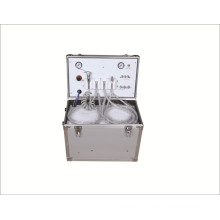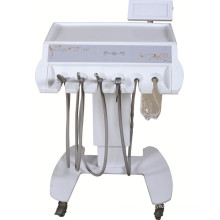Home > Industry Information > OLED moneyscape lighting is better than display
OLED moneyscape lighting is better than display
2021-05-02
Under the high price of oil and electricity, the emerging lighting of energy-saving and energy-saving has become the focus of development in the industry. In addition to LED lighting, international manufacturers have also invested in the development of OLED lighting.
At present, there are many manufacturers of OLED lighting. In addition to the investment of luminescent materials in chemical materials factories, there are also plastic and steel or glass manufacturers to invest in the development of substrates. In addition to the layout of LED lighting, there are also layout OLED lighting, and several other OLED lighting products. Invested in the target newcomers.
Since the second half of 2011, NEC, Konica Minolta, Toshiba, Panasonic (Panasonic OLED lighting) and other major manufacturers have exhibited samples of OLED lighting at various exhibitions, and even some manufacturers have announced future product blueprints.
Panasonic
Published OLED lighting devices with luminous efficiency exceeding 128 lm/W, mainly by Panasonic and Yamagata University, Aoyama Gakuin University, Idemitsu Kosan, TAZUMO, Changzhou Industry and other schools, and equipment and materials companies to participate in NEDO's "second generation high Research project for the development of high-efficiency lighting base technology, with Nippon Steel Chemical and UDC (Universal Display) materials.
Its structural design utilizes a high tortuosity layer and a fine structure as an optical adjustment layer, which can increase the light extraction rate from 25-30% to 40% of the conventional structure; plus, add a layer of electron between the cathode and the luminescent material. The barrier is reduced to reduce the efficiency of electron injection; the blue light is changed to a luminescent material with a wavelength of 475 nm to improve the lifetime of the blue luminescent material.
Panasonic actively invested in OLED lighting business. In March 2011, it established a joint venture with material manufacturer Idemitsu (Ididetsu) for 1.5 billion yen to establish OLED lighting company PIOL (Panasonic Idemitsu OLED Lighting) and also signed a supply contract with UDC. The current product has a luminous efficiency of only 3000 cd/m2, a size of 80 x 80 mm, and a lifetime of 10,000 hours. It is expected that Panasonic will further increase the luminous efficiency of OLED lighting panels to 130 lm/W in 2018, the lifespan will increase to 40,000 hours, and the size will be expanded to 600. × 600mm, and can be soft, flexible, transparent and tonable.
Toshiba
After the earthquake in Northeast Japan, Toshiba provided a number of portable OLED lighting fixtures for use in the shelter of Kesennuma City, Miyagi Prefecture. It relies on four No. 4 dry batteries to maintain 20 hours, allowing residents to use as reading lights. use.
The main technology comes from the coating production technology developed by Toshiba R&D Center, which replaces the traditional evaporation method and can improve the utilization rate of materials to reduce costs.
Sumitomo Chemical
In the medium-term business plan, Sumitomo Chemical is expected to officially popularize and expand its business applications in 2012. In addition to displaying 40-inch TVs, it also displays various lighting fixtures.
Sumitomo Chemical is different from other companies in that it uses a layer of high-molecular organic light-emitting materials (PLEDs) instead of ordinary small-molecule OLEDs using RGB three-layer luminescent materials.
Sumitomo Chemical undertook Dow Chemical's PLED Materials Division in 2005, and the UK's Polymer Organic Luminescent Materials Factory CDT, which was jointly acquired by M&A in 2007, is actively commercializing PLED.
In 2011, Sumitomo Chemical merged the Tsukuba Research Institute and the Advanced Materials Exploration Institute of the Tsukuba Research Institute, and invested $60 million in Osaka to set up a material production line to supply PLED materials for lighting and displays.
In April 2012, Sumitomo Chemical's "Lighting & Building 2012" exhibition in Frankfurt, Germany, displayed 60 different color polymer OLED lighting fixtures, and plans to launch decorative lighting products in 2013, launched in 2015 as a general Lighting products.
Lumiotec
In May 2008, Lumiotec, a new Japanese-style lighting company, was founded by Mitsui, Toppan, Rohm, Mitsubishi Heavy Industries and Yamagata University.
Mitsui is responsible for white light OLED marketing support, letterpress is responsible for light output technology and other post-process development, ROHM is responsible for white light OLED component development, Mitsubishi Heavy Industries is responsible for white light OLED manufacturing equipment development, and Professor Yuki Koji is responsible for OLED related technical support.
Philips
Philips, a traditional lighting manufacturer, has not only invested in LED lighting, but also launched OLED lighting products. At present, it does not compete with other manufacturers in luminous efficiency, focusing on the decorative lighting market, combining Philips' design capabilities, launching various table lamps, situational lighting and installation art, and more specifically using creative and interactive technology in W Hotel in Taipei. Set up an OLED interactive light wall.
Philips is expected to introduce transparent penetrating products in 2013, multi-color and flexible products in 2018, and general lighting will reach 130lm/W in 2018.
LG Chem
LG Chem of South Korea announced that OLED lighting products will be mass-produced at the end of 2011. Under the assistance and organization of the Korean government, LG Chem combines SNU Precision, Sunic System and DMS with Korean equipment factories, as well as its own material development, as well as KETI and Korean universities. Research energy, has the mass production strength of G5 substrate size.
LG Chem has launched the first "OLED-041" panel, which is 100 x 100-mm in size and has a luminous efficiency of 45 lm/W and 10,000 hours of life. The second is expected to be mass-produced in the second quarter of 2012. Efficiency up to 60 lm / W and 15,000 hours of life.
Nanjing First Organic Photoelectric
In addition to small and medium-sized AMOLED panels, such as Tianma Microelectronics, Kunshan Visionox, Sichuan Changhong, and Foshan Rainbow, there are also manufacturers in China that have invested in OLED lighting with local government support.
The top executive of Nanjing First Organic Optoelectronics is from Kodak. With experience in the development of OLED lighting and displays, the experimental products have reached the luminous efficiency of 50.4lm/W. The goal is to achieve 70lm/W, and an annual production capacity of 20,000 is being established in Nanjing. The G2.5 (370mm*470mm) production line of square meters is expected to be mass-produced by the end of 2012. Long-term production lines with an annual output of 5 to 1 million square meters will be established after 2015, optimistic about the demand after China launched the "OLED green lighting project" after 2015.
Taiwan opportunity
According to NanoMarket's estimates, in 2017, OLED's shipment area in the lighting field will reach 57.3 million square meters, far exceeding the 9.69 million square meters in the display field. OLED's shipment area in the lighting field is 6 in the display field. Times.
The rise of OLEDs in the field of display and lighting will drive business opportunities for related materials: chemical materials plants are investing in luminescent materials, and steel, glass and plastics manufacturers are targeting the market for substrates; more manufacturers are investing in OLED lighting panels to develop OLEDs. Features, combined with design and creativity, introduce new products.
For the Taiwanese industry, OLEDs have materials manufacturers such as 昱Ra, Jingyi, and many school teachers are engaged in material research with the support of the National Science Council. Currently, in addition to mass production in AMOLED, in response to the demand for smartphones and TVs, It can combine domestic design creative talents with past material research and development energy to launch innovative new products, in response to OLED lighting business opportunities after 2014.
Here you can find the related products in OLED moneyscape lighting is better than display, we are professional manufacturer of Oled Chemistry,Cas 4431-83-8,99% Bis 2-Methoxyethoxy Methane,4431-83-8 99%. We focused on international export product development, production and sales. We have improved quality control processes of OLED moneyscape lighting is better than display to ensure each export qualified product.
If you want to know more about the products in OLED moneyscape lighting is better than display, please click the product details to view parameters, models, pictures, prices and other information about Oled Chemistry,Cas 4431-83-8,99% Bis 2-Methoxyethoxy Methane,4431-83-8 99%.
Whatever you are a group or individual, we will do our best to provide you with accurate and comprehensive message about OLED moneyscape lighting is better than display!
If you want to know more about the products in OLED moneyscape lighting is better than display, please click the product details to view parameters, models, pictures, prices and other information about Oled Chemistry,Cas 4431-83-8,99% Bis 2-Methoxyethoxy Methane,4431-83-8 99%.
Whatever you are a group or individual, we will do our best to provide you with accurate and comprehensive message about OLED moneyscape lighting is better than display!
Oled Chemistry, Cas 4431-83-8, 99% Bis 2-Methoxyethoxy Methane, 4431-83-8 99%
Sofine Electric Co., Ltd. http://www.hnphotoinitiators.com

